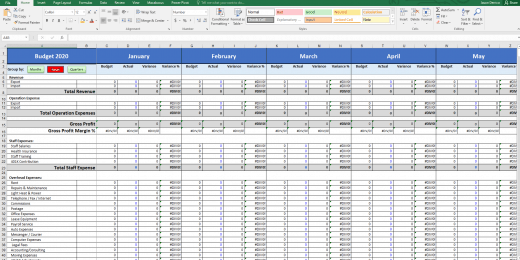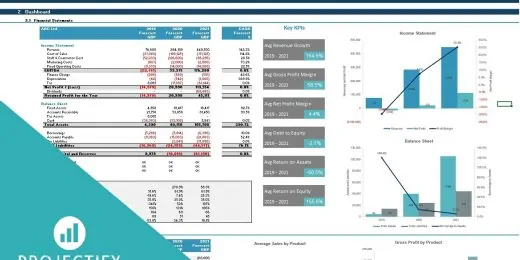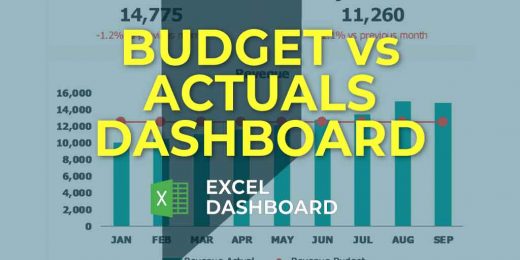A Comprehensive Guide to Excelling in Finance Terms to Know

A solid grasp of finance terms is crucial for success in the financial world. Knowing key terminology empowers professionals to make informed decisions.
Mastering finance terms is essential for anyone interested in excelling within the financial industry. This knowledge serves as the foundation for understanding complex financial concepts and engages in effective communication with peers, clients, and stakeholders. It’s the bedrock upon which savvy investment strategies, robust economic analyses, and astute fiscal management are built.
Beginners and seasoned professionals alike will find that a command of financial vocabulary not only enhances their credibility but also boosts confidence in navigating the intricacies of finance. Our guide aims to distill these terms into an accessible format, providing a springboard for professional growth and financial acumen.
Introduction To Finance Literacy
Understanding money is key to success. It helps you make smart decisions. Learn finance terms and grow your knowledge. Start with finance literacy. It opens the door to managing money well. Let’s explore key concepts and why they matter.
Importance Of Financial Knowledge
Kids to adults, knowing finance is crucial. It’s about saving, spending, and investing wisely. Financial knowledge gives you control. You can plan for the future. It helps avoid debt. It’s essential for every person’s toolkit. Make your money work for you. Start with the basics.
- Make Better Choices: Know where your money goes.
- Avoid Mistakes: Don’t fall for bad deals.
- Gain Confidence: Handle money matters with ease.
Basics Of Financial Management
Good money handling starts young. It involves budgeting, saving, investing, and understanding credit. These are the fundamental skills to grow wealth. Let’s break them down:
| Budgeting | Saving | Investing | Credit |
|---|---|---|---|
| Track income and expenses. | Set aside money for later. | Put money in stocks or bonds. | Use loans wisely. |
Master these areas and build a strong financial foundation. Kids, teens, and adults all benefit from this knowledge. It’s about being smart with your cash. Start simple. Grow your savings. Learn how investing works. Be credit savvy. Take charge of your financial future today.
Key Financial Concepts
Welcome to the heart of financial mastery: the indispensable Key Financial Concepts. These pillars of fiscal wisdom are the foundation for savvy investing, smart money management, and effective financial decision-making. Grasping these concepts unlocks the door to financial literacy and empowers individuals to navigate the economic world with confidence. Let’s delve into understanding the core principles that guide the flow of finance.
The Time Value Of Money
At the core of financial decision-making lies a profound concept: The Time Value of Money (TVM). It is the idea that money available today is worth more than the same amount in the future due to its potential earning capacity.
- Present Value: The current worth of a future sum of money.
- Future Value: The value of a current asset at a specified date in the future.
- Interest Rates: The cost of borrowing money or the reward for saving.
To bring this concept to life, imagine choosing between $100 now or $100 in a year. The smart choice often leans towards taking the money now because you can invest it and earn interest, making it worth more over time.
Understanding Risk And Return
Another cornerstone of the financial world is the relationship between Risk and Return. Investments with higher risk usually offer the potential for higher returns.
| Investment Type | Risk | Potential Return |
|---|---|---|
| Bonds | Lower | Moderate |
| Stocks | Higher | Higher |
| Savings Account | Lowest | Low |
To manage these aspects, investors must balance their desire for high returns with their tolerance for risk.
Financial Statements Decoded
Understanding the language of finance opens doors to better financial decision-making. At the heart of this language are financial statements. These documents are scorecards for your business, reflecting its fiscal health and guiding strategic planning. Let’s unveil the mystery behind three critical financial reports: Balance Sheets, Profit and Loss Statements, and Cash Flow Insights.
Balance Sheets Unveiled
Think of a balance sheet as a snapshot of your company’s financial standing at a given moment in time. This statement divides into two key sections: assets and liabilities plus equity.
Assets are what your company owns. Liabilities are what it owes. Equity is the difference between the two.
| Assets | Liabilities | Equity |
|---|---|---|
| Cash | Debts | Owner’s Capital |
| Inventory | Loans | Retained Earnings |
- Assets should always equal the sum of liabilities and equity.
- They offer a clear view of financial strength.
Profit And Loss Statements Explained
The Profit and Loss statement, or P&L, tells the story of your business’s earnings and expenses over time. It’s a movie, while the balance sheet is a photograph.
- Start with sales or revenue.
- Subtract the costs of goods sold.
- Deduct other operating expenses.
- What remains is your net profit or loss.
Gross profit, operating profit, and net profit are critical checkpoints in this story.
Cash Flow Insights
Cash flow statements reveal the liquidity position of your business. It records the cash in and out over a period. Unlike P&L, it deals with actual cash transactions.
- Operating activities include daily business transactions.
- Investing activities cover asset purchases or sales.
- Financing activities involve loans and shareholder equity.
Positive cash flow means more cash is entering than leaving your accounts. It’s essential for solvency.
Budgeting And Forecasting
Mastering the art of budgeting and forecasting can transform a business’s financial health. It involves crafting a detailed financial plan. It looks ahead to future income and expenses. Budgets guide day-to-day decisions. Forecasts allow businesses to anticipate results and trends. Understanding the nuances of both is crucial for growth.
Creating Effective Budgets
To create an effective budget, begin by examining past spending. It’s about building a plan that supports your financial goals. Consider the following tips:
- Review historical data: Look at your previous financial data to estimate future costs and revenues.
- Identify fixed costs: Understand expenses that do not change month-to-month, such as rent and salaries.
- Estimate variable costs: These can fluctuate, including utilities and materials. Predict these expenses based on past trends.
- Set clear goals: What do you want your finances to achieve? More sales? Less debt? Outline these objectives.
- Monitor regularly: Update your budget as financial circumstances change. Stay flexible.
Strategic Forecasting Techniques
Forecasting is about looking ahead and making predictions. Execute strategic forecasts with these steps:
- Gather data: Collect financial data. This includes sales figures, market trends, and economy-wide indicators.
- Analyze patterns: Use this data to spot patterns. This might involve seasonal sales spikes or certain trends.
- Use forecasting models: Apply models like moving averages or regression analysis to predict future trends.
- Involve experts: Sometimes, you need expert analysis. They can provide insights into complex patterns.
- Update forecasts: As new data emerge, refine your forecasts. This keeps them accurate over time.
Credit Essentials
Embarking on the journey to financial wisdom starts with grasping credit essentials. An impressive command over credit concepts paves the way for securing a prosperous future. Mastering credit basics can lead to better loan conditions, lower interest rates, and improved financial opportunities.
Credit Score Fundamentals
A credit score is like a financial report card. It shows lenders how well you handle money. A high score means you’re reliable, which can help you get loans and save money.
Key components that affect your score:
- Payment History – Do you pay bills on time?
- Credit Usage – How much of your available credit do you use?
- Credit Age – How old are your credit accounts?
- Credit Mix – What types of credit do you have?
- New Credit – How often do you apply for new credit?
To build a good score, pay bills on time, keep debts low, and only get new credit when needed.
Managing Debt Wisely
Smart debt management ensures you do not fall into a financial pitfall. It is crucial for keeping a solid credit score. Overwhelming debt can lead to stress and money loss.
Strategies to manage debt:
- Create a budget and stick to it.
- Focus on high-interest debts first.
- Consider a debt consolidation loan if necessary.
- Speak with a financial advisor for personalized advice.
- Use balance transfer credit cards with caution.
Remember, staying informed and proactive about debt leads to better credit health and financial freedom.
Investment Strategies
Smart investing is key to growing your wealth. It’s important to master different investment strategies. The right approach can make or break your financial success. Let’s explore those strategies. We’ll focus on diversification, the stock market, and bonds. Each offers unique benefits and risks. Understanding these can help you make informed decisions. We’ll uncover the essentials to help you thrive in the world of finance.
Diversification Principles
Diversification is your safety net in investing. It spreads your money across various assets. This reduces the risk of losing it all. Think of it as not putting all your eggs in one basket. Diversifying can include stocks, bonds, and other asset types. It’s the core of a strong investment plan.
- Asset Allocation: Balance your portfolio across different asset classes.
- Risk Management: Mix high-risk with low-risk investments to manage potential losses.
- Geographic Spread: Invest in markets around the world to mitigate regional risks.
Understanding Stock Markets
The stock market can be your wealth booster. It’s where shares of companies are bought and sold. When a company grows, your shares increase in value. There are risks, but knowing the market lets you spot opportunities.
| Term | Meaning |
|---|---|
| Bull Market | Market on the rise, where share prices are increasing. |
| Bear Market | Market is falling, and share prices are declining. |
| Dividends | Profits paid to shareholders, usually quarterly. |
Research a company before you invest. Look at their financial health and growth potential.
Bond Investment Nuances
Bonds are loans to governments or corporations. When you buy a bond, you’re lending money. In return, you get interest payments. When the bond matures, you get your initial investment back.
- Interest Rate: The percentage paid to you for lending your money.
- Maturity Date: When the borrower must return your initial investment.
- Credit Risk: The chance that the borrower might not pay back the bond.
Bonds can be less risky than stocks. They offer steady income through interest payments. It’s a good choice for a balanced portfolio.
Taxation And Personal Finance
Understanding taxation and personal finance is crucial for financial success. Taxes affect nearly every aspect of our lives, from paycheck to investments. Personal finance is all about managing money, including taxes. It shapes the way we save, invest, and spend. To excel, one must grasp these essentials. Let’s dive into the basics of income tax and explore tax-advantaged investments.
Income Tax Basics
Income tax is what you pay on earnings. It includes wages and income from investment. Every year, you must file a tax return. It tells the government how much you earned and how much tax to pay or get back. Your tax rate depends on how much you earn.
- Gross Income: Your total earnings before deductions.
- Net Income: What you take home after taxes and deductions.
- Deductions: Qualifying expenses that reduce your taxable income.
- Credits: These reduce your tax bill directly, unlike deductions.
Tax-advantaged Investments
Tax-advantaged investments can grow your wealth. They offer benefits at tax time. They can lower your taxable income or offer tax-free gains.
| Type of Investment | Benefit |
|---|---|
| Retirement Accounts(IRA, 401(k)) | Deferred taxes on earnings |
| Education Savings(529 Plan) | Tax-free withdrawals for education |
| Health Savings Account(HSA) | Pre-tax contributions and tax-free withdrawals for medical expenses |
Select tax-advantaged investments to reach financial goals. These tools can help save for college, retirement, and health care. Choose wisely to maximize your benefits.
Insurance And Risk Management
Every finance expert should understand insurance and risk management. These areas are crucial for protecting assets and reducing losses. Businesses and individuals rely on smart strategies to handle unexpected events. Let’s dive into the essentials of these important concepts.
The Role Of Insurance
Insurance acts as a safety net. It helps people and companies recover from financial setbacks. Various types of insurance cover different risks. Health, property, and life insurance are just a few examples.
- Health Insurance: Covers medical expenses.
- Property Insurance: Protects against damage to buildings or belongings.
- Life Insurance: Offers financial support to beneficiaries after someone passes away.
Assessing And Mitigating Risks
Assessing risks involves identifying potential problems before they occur. After recognizing these risks, the goal is to reduce their impact. Risk mitigation strategies include:
- Insurance policies.
- Safety measures at work.
- Diversifying investments.
Diversification is a key method for managing financial risks. It involves spreading investments across various assets. This approach helps stabilize overall investment performance.
Retirement Planning
Getting ready for retirement is key to a comfortable future. It’s about understanding and making smart choices with several financial tools. Let’s talk about some you need to know.
401(k)s And Iras
401(k) plans and Individual Retirement Accounts (IRAs) are popular ways to save. They offer tax benefits which help your savings grow faster.
- 401(k)s: Often set up through your job, allow you to save part of your pay before taxes.
- IRAs: There are two main types, Traditional and Roth, each with different tax rules.
Traditional IRAs reduce your taxable income now, but you’ll pay taxes later. Roth IRAs are the opposite. You pay taxes now, but withdraws in retirement are tax-free.
| Plan | Tax Benefit | Contribution Limits (2023) |
|---|---|---|
| 401(k) | Pre-tax contributions | $20,500 |
| Traditional IRA | Tax-deductible contributions | $6,000 |
| Roth IRA | Tax-free withdrawals | $6,000 |
Pension Plans And Annuities
Pension plans and annuities provide a steady income in retirement. Each works differently but aims to give you financial stability.
- Pension Plans: These are often employer-sponsored. They pay you a set amount based on salary and years of service.
- Annuities: You purchase these from an insurance company. They then pay you a regular income for life or a set period.
Both options focus on long-term security. Pensions are less common but valuable. Annuities come in different forms like immediate or deferred, affecting when you get paid.
Evolving Finance World
The finance world is on the move. New financial terms pop up as this field evolves. It’s important to keep up!
The Impact Of Technology On Finance
Technology changes finance. Remember when we went to a bank to send money? Now, we have apps for that. Let’s explore the tech that shapes money matters today.
- Blockchain: This tech keeps our transactions safe.
- Mobile payments: Buying stuff with our phones is normal now.
- AI: Artificial intelligence helps banks decide who gets loans.
- Big Data: Huge info chunks help find spending patterns.
All these tech tools make money moves quick, safe, and smart.
Emerging Trends In Fintech
FinTech, or financial technology, is about fresh ways to do finance. It’s buzzing with cool stuff. Here’s some of it:
| Trend | Description |
| Neobanks | Banks without any branches. Just online. |
| InsurTech | It’s tech for buying insurance. Makes it easy. |
| RegTech | Tools to manage rules and compliance. |
| Peer-to-peer lending | Borrow money from other people online. Skip the bank. |
These FinTech trends shake up the old ways. They make finance simpler and more accessible for everyone.
Frequently Asked Questions
What Are Key Finance Terms To Understand?
Understanding finance terms like ‘net income,’ ‘assets,’ ‘liabilities,’ ‘equity,’ and ‘ROI’ are pivotal. They form the foundation of financial literacy, aiding in interpreting company health and investment potential efficiently.
How Can Financial Jargon Affect Investment Choices?
Grasping financial jargon, such as ‘diversification,’ ‘liquidity,’ and ‘volatility,’ empowers investors to make informed decisions. It helps to evaluate risks and opportunities, leading to smarter investment strategies.
What Does ‘amortization’ Mean In Finance?
Amortization refers to the gradual repayment of a debt over time. In business finance, it often applies to expensing the cost of an intangible asset across its useful life.
Why Is Understanding ‘leverage’ Crucial In Finance?
Understanding ‘leverage’ is crucial as it describes using borrowed capital for investment, amplifying potential returns. However, it also increases the risk of losses, which underscores its significance in financial strategy.
Conclusion
Mastering financial terminology empowers you to navigate the economic landscape confidently. As we close this chapter, remember: your grasp of these concepts can truly set you apart. Keep revisiting this guide to stay sharp and informed. With dedication, the language of finance will become second nature to you.
Embrace the journey of continuous learning!



















































